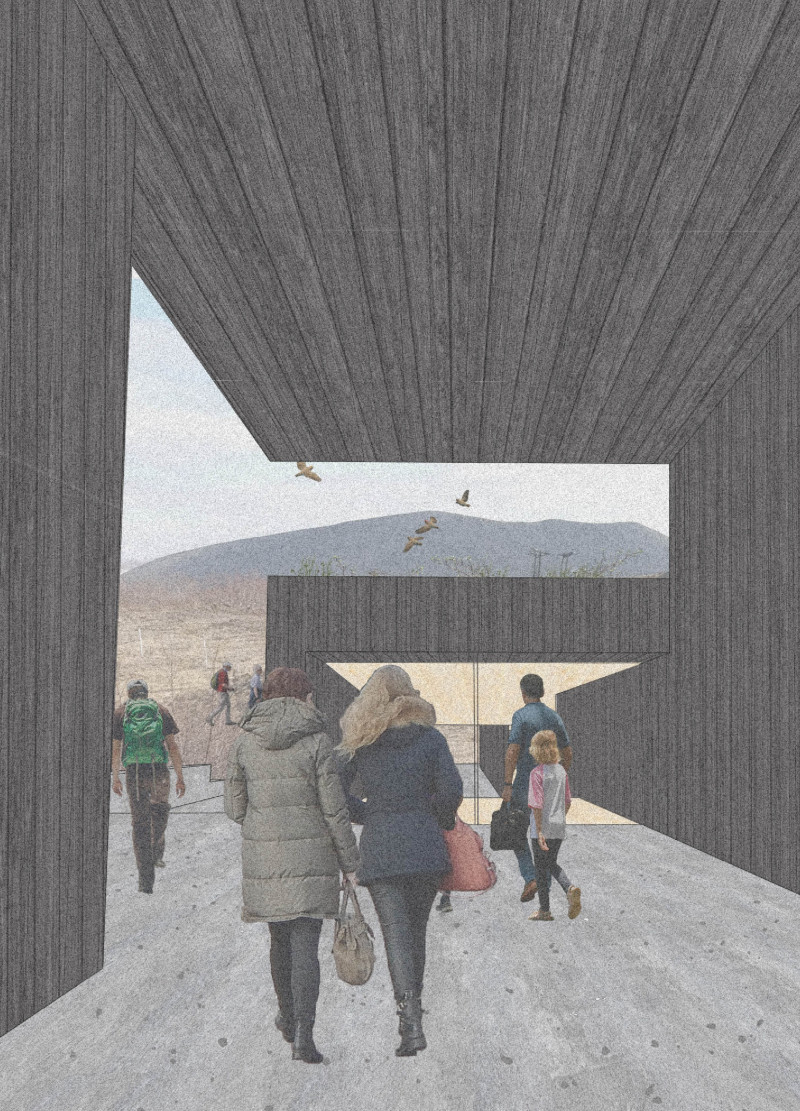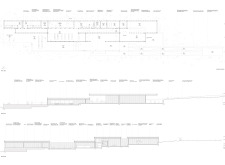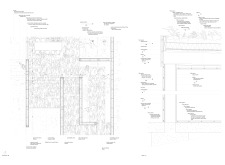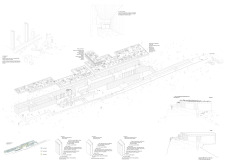5 key facts about this project
This project serves multiple functions, catering to communal and private needs alike. The careful arrangement of spaces within the design ensures that every area is purposefully planned to encourage interaction while providing opportunities for solitude. This balance is essential in a world where social dynamics are increasingly important, and users seek both community and personal space. The layout invites users to explore and engage, without feeling confined, fostering a sense of belonging and comfort within the architecture.
A key feature of the project is its materiality, which plays a significant role in grounding the design within its context. The use of exposed concrete provides structural integrity and a tactile quality, while timber cladding adds warmth and a natural element that resonates with the outdoor environment. The inclusion of large glass openings promotes transparency, inviting natural light into the interior and offering unobstructed views of the landscape. This transparency enhances the connection between indoor and outdoor spaces, reinforcing the concept of elongated lines that guide movement towards nature.
The building's green roofs feature native vegetation, promoting biodiversity and ecological sustainability. This design approach not only facilitates insulation and energy efficiency but also enhances the aesthetic quality of the building, creating spaces that users can enjoy while contributing to their surroundings. These unique elements reflect a commitment to environmentally conscious design, illustrating how architecture can effectively respond to ecological concerns while remaining functional and inviting.
In terms of spatial configuration, the project incorporates outdoor terraces that act as transitional spaces, further blurring the lines between the built environment and nature. These terraces provide opportunities for social interaction, allowing users to gather while simultaneously enjoying the views of the surrounding landscape. The diverse arrangement of spaces, including flexible areas for various activities, underscores the adaptability of the design in accommodating the needs of diverse user groups.
The design philosophy behind "Elongated Lines" stands out due to its focus on creating a dialogue between architecture and the natural world. By emphasizing continuity and integration, the project moves beyond traditional boundaries, offering experiences that resonate on multiple levels. This approach invites users to engage thoughtfully with their environment, making the space not just a physical structure but an integral part of the landscape.
For those interested in a deeper understanding of the architectural details, aspects such as the architectural plans, architectural sections, and architectural designs provide valuable insights into the project’s framework and execution. Exploring these elements can illuminate the thoughtful ideas that shaped this project and enhance one's appreciation for its design and function. The interplay of space, light, and materiality in "Elongated Lines" exemplifies how architecture can navigate the complexities of modern living, making it a noteworthy study for anyone invested in the field.


























